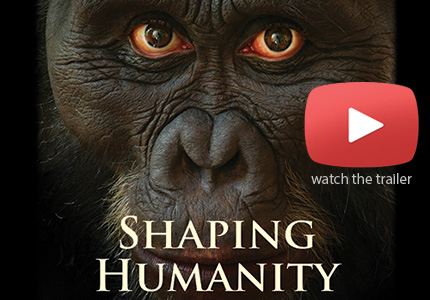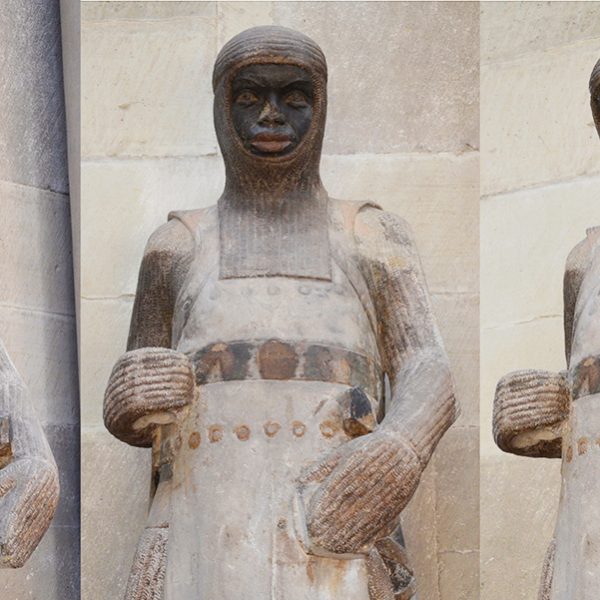Shaping Humanity through Art and Science
Imagine working at an excavation site on a mission to unearth pieces of our prehistoric past. And suddenly you discover a skull underneath mounds of dirt, the remains of a distant ancestor who has remained hidden for millennia. Such a discovery was celebrated in Georgia earlier this month after an incredibly intact skull was discovered at the Dmanisi excavation site.
 Finding such an intact skull is an incredibly rare stroke of luck, for most times archaeology must make do with bones or bone fragments. Scientific investigation and technology have allowed us to infer about the skeletal systems of many proto-human primates. But is it possible that science can take us only so far in helping us imagine these piles of bones as remnants of living creatures that roamed an Earth so different from what we inhabit today?
Finding such an intact skull is an incredibly rare stroke of luck, for most times archaeology must make do with bones or bone fragments. Scientific investigation and technology have allowed us to infer about the skeletal systems of many proto-human primates. But is it possible that science can take us only so far in helping us imagine these piles of bones as remnants of living creatures that roamed an Earth so different from what we inhabit today?
To help us in this challenge, we need the knowledge of a scientist, the savvy of an investigator, and the vision of an artist. And John Gurche has combined all three strengths to reconstruct the bodies of 15 primates from 8 different species for the Smithsonian Museum Hall of Human Origins, which opened in 2010. Gurche’s book, Shaping Humanity: How Science, Art, and Imagination Help Us Understand Our Origins, recounts his experiences—which involve dissection, scientific study, and sculpture—about the process of primate reconstruction, including that of the famous “Lucy.”
Watch the more detailed animation on the Yale Press YouTube channel.
From the analysis of the canines to the shape of the mandible to the prominence of the brow ridges, Gurche walks us through the series of questions and inferences he makes upon examining the bones of these ancestral primates. We learn what particular morphological traits relate one species to another. It allows us to understand what makes humans more related to Australopithecus Africanus than a chimpanzee, for example. Gurche also contextualizes a lot of his decisions by explaining the diet, tools, and behavior of the species he is studying. In his familiar, approachable prose style, he provides an insightful reflection about his experience while also giving us a lesson in biological anthropology.
It’s a very human story in that Gurche does not sugarcoat his failures and struggles in the process. He tells us about how 15 months of work crumbled away when his initial sculpture of Lucy disintegrated, revealing how the use of urethane was far inferior to the use of silicone in making the sculptures. At times, Gurche finds himself having created a bust that inaccurately suggests a similarity with a different species or to achieve the desired look, he must have to make artistic choices that go against anatomical structures. Small details such as the wrong dental cusps or a slightly misshaped foot can suggest incorrect information about the primate, for these sculptures are as much teaching tools as they are works of art.
Using scientific knowledge in addition to technology, Gurche shows us the entirety of the skeleton that forms the basis of his work. From there, he uses materials such as clay, plaster, silicone, and acrylic. But beyond the difficulties of balancing the scientific with the artistic, there is also the matter of how to actually depict the reconstruction as a representation of a living being. The sculpture captures a swift moment in the life of the primate, so which moment should Gurche choose? When the primate is mid-motion while hunting or idle and lost in thought? What expression should the creature take and where does it look? As an investigator he asks these questions but as an artist, he conducts experiments such as studying live, moving models to capture a sense of motion in his sculptures and instill a vital presence into them, showing how bone, muscle, and skin come together to make a living being.
There is something that happens between sculptor and sculpture that might be called animistic magic. This has to happen if the sculpture will work as an evocation of something alive… There must be a transition in his mind from the nonliving to the living, a process of imbuing nonliving materials with life. So there are, with each sculpture that succeeds in doing this, moments when you feel this transition happening under your hands as they move (blood flows, claw warms into flesh). Rationally, you are aware that this is a projection of your hope and your will onto clay and plaster, but still you feel that something else, some quality of the living, is present.
One might ask what the point is of reconstructing the bodies of these ancestral primates. Are the bones not enough? Does not the outline of the big picture suffice for us to understand it? We could ask the same question about why people stage yearly reenactments of famous battles or write novels about historical figures and events. There is a human fascination with making history come alive and feel real to us. Our past is more than just words on a page or the bare bones of a being; it’s a consciousness that we try to tap into for us to enjoy, be inspired by, and learn from for the future.




I think it was really unfortunate to end the video on a white person. The implication is that light skinned people are more evolved, when it just means they evolved in a low UV environment. Most of the other steps shown in the video are African. Africa is the birthplace of humanity. I think it would have been better to end on someone with pigmentation typical of humans from Africa. It would have avoided this perception without taking anything away from the video.